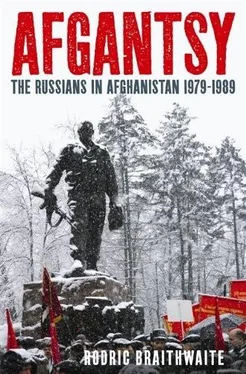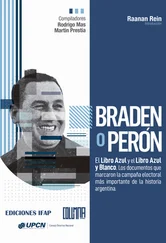During all these years, the educational system was systematically developed, at least in the capital city. Habibia College, a high school modelled on an elite Muslim school in British India, was set up in Kabul in 1904. Amanullah sent many of its students to study in France and elsewhere in Europe. A School of Medicine was inaugurated in 1932, followed by faculties of Law, Science, Agriculture, Education, and Engineering, which were combined into a university in 1947. Most of the textbooks and much of the teaching were in English, French, or German. A faculty of Theology was founded in 1951 linked to the Islamic University of Al-Azhar in Cairo. In 1967 the Soviet Union helped establish a Polytechnic Institute staffed largely by Russians. Under Zahir Shah’s tolerant regime student organisations were set up in Kabul and Kandahar.
Daud rapidly expanded the state school system. Between 1950 and 1978 numbers increased by ten times at primary schools, twenty-one times at secondary schools, and forty-five times at universities. But the economy was not developing fast enough to provide employment for the growing numbers of graduates. Many could find jobs only in the rapidly expanding government bureaucracy. Salaries, already miserable, lost half their real value in the 1960s and 1970s. The good news—though not for conservatives—was that about 10 per cent of this expanded bureaucracy were women.
The American scholar Louis Dupree called Kabul University ‘a perfect breeding ground for political discontent’. It was in the universities that Afghanistan’s first political movements were created. A Communist Party, the People’s Democratic Party of Afghanistan, was set up in 1965 by Nur Mohamed Taraki, Babrak Karmal (1929–96), and Hafizullah Amin, all of whom were to play a major role in the run-up to the Soviet invasion. A number of students who were later to become prominent in the anti-Communist and anti-Soviet struggle also fledged their political wings there: Rabbani (1940–), Hekmatyar (1947–), Abdul Rasul Sayyaf (1946–), and Ahmad Shah Masud (1953–2001) all studied together in Kabul University. Students rioted in 1968 against conservative attempts to limit the education of women. In 1969 there were further riots, and some deaths, when high school students protested against the school management. The university was briefly closed.
Social and political dissatisfaction increased with the return of young Afghans who had been sent abroad for technical or military training. Between 1956 and 1978 nearly seven thousand Afghan students attended Soviet academic and technical institutions. An agreement with the Soviets in 1955 provided for military training in the Soviet Union: about a hundred young men went to the Soviet Union and Czechoslovakia every year. 3
All these institutional changes, admirable as they were in principle, had little support among the Afghan people. The number of educated and reform-minded Afghans grew in Kabul and some of the other towns. But they had very little influence in the villages, which remained under the sway of tribal leaders, landlords, and mullahs. Time and again reform and the emancipation of women by liberals in the cities fell foul of the religious conservatism of the villages and the mountains. And when push came to shove, it was the views of the countryside that prevailed and derailed the best efforts of the reformers.
Imperial Russia Moves South
From the eighteenth century onwards new predators began to circle round the struggling Afghan state. Once the Russians had secured their western frontiers against their European neighbours, and their eastern and southern frontiers against the nomads and the Tatars, the logic of empire—the search for security and the search for trade—led them into the forests of Siberia and into the vast and underpopulated southern steppes and deserts. 4
Their expansion was not unopposed. They clashed with the Turkish and Persian empires, and soon came to see the less sophisticated states of Central Asia as a threat, an opportunity, and a barrier to any ambitions they had towards Afghanistan and the riches of India beyond.
Peter the Great’s imagination was fired by reports of gold to be found along the Amu Darya, the river which was eventually to become the boundary between Afghanistan and Russia. The local ruler, the Khan of Khiva, was said to be willing to become Peter’s vassal in exchange for Russian protection from his rebellious subjects. Peter ordered Alexander Bekovich, a captain in the Life Guards and a converted Muslim prince from the North Caucasus, to find out more. He gave Bekovich a force of over six thousand men—horse, foot, guns, and a clutch of merchants—to build fortresses along the Amu Darya, to persuade the Khan of Khiva to help find the gold, and to open the trading route to India. Bekovich reached Khiva in the summer of 1717. After an initial welcome, the Khan treacherously slaughtered him and his men, stuffed his head with straw, and sent it to the Khan of Bukhara. A few years later, in 1728, the Russians collided for the first time with the Afghans, when their troops encountered an Afghan army which had invaded Persia. The Russians prevailed. 5
By the middle of the century the Russians became aware that they were facing another adversary, one whose imperial ambitions matched their own. In Peter’s day, the British in India had been mere tradesmen. But the Russians began to take them more seriously as the East India Company consolidated its position after the Battle of Plassey in 1757, annexing native Indian states by force, imposing its hegemony on nominally independent Indian rulers, and driving out its French, Dutch, and Portuguese rivals.
Over the coming decades, anxious to get revenge for their defeats in India, the French proposed to the Russians a number of ill-considered schemes for the invasion of India through Persia or Afghanistan. 6In 1791 a French adviser to Catherine the Great suggested that she send her troops to march on India via Bukhara and Khiva, ‘announcing as they advanced that they had come to restore Muslim rule under the Moguls to its former glory [and thus] foment mass uprisings against the British within India as word of their coming spread’. 7Catherine’s confidant and former lover, Potemkin, dissuaded her from pursuing this hare-brained scheme.
Another Franco-Russian scheme emerged in 1801. Even though their two countries were still technically at war, the Russian emperor Paul I proposed to Napoleon that they should mount a joint attack on India. Without waiting for an answer, Paul ordered General Orlov, the commander of the Don Cossacks, to take thirteen regiments ‘by one or all of three routes through Bukhara and Khiva to the English possessions in India which lie beyond the River Indus’. Orlov could take the riches of India as his reward. Worryingly, Paul added, ‘My maps go only as far as Khiva and the Amu Darya. Beyond that it is up to you to get information about the English possessions and the Indian peoples who are subject to them.’
Orlov set out in the depths of winter, with over twenty thousand men. In the first month his force, hungry and ill-provided, lost a fifth of its horses and an uncertain number of men. He had not even left imperial territory before he was ordered to turn back after Paul was assassinated on 11 March, strangled by his ministers with the connivance of his son and (so Russians believe) the active complicity of the British Ambassador. 8
Hare-brained schemes continued to be bandied around by hotheads in St Petersburg for some decades. But sober opinion agreed with General von Bennigsen, the Baltic German aristocrat who commanded the Russian army in 1807. The British, he argued, had created a European-style military system in India funded by local taxpayers. This army, ‘formed on the same lines as our European regiments, commanded by English officers, and excellently armed, manoeuvres with the precision of our grenadiers’. In the past Asiatic cavalry armies had invaded India over its north-west frontier and conquered the subcontinent, but these had no chance against the Anglo-Indian infantry and artillery. Meanwhile no rival European army could reach the subcontinent because the British dominated the sea routes and the logistical problems of getting a European-style army across Persia or Afghanistan were insurmountable. Having himself campaigned in northern Persia, Bennigsen spoke with authority. 9
Читать дальше












